Formas de reactivar baterías de litio NP45 de forma segura
Si tiene problemas para reactivar sus baterías de litio NP45, no se preocupe, no está solo. Estas baterías de litio, compactas pero potentes, se usan ampliamente en cámaras digitales y dispositivos electrónicos portátiles, y si bien suelen ser confiables, ocasionalmente pueden dejar de funcionar. En esta publicación, exploraremos métodos seguros y efectivos para reactivar las baterías de litio NP45. Comprender cómo funcionan las baterías de litio y cómo solucionar sus problemas de forma segura puede ahorrarle dinero y reducir los residuos.
- Comprensión de las baterías de litio y su comportamiento
- Razones comunes por las que las baterías de litio NP45 dejan de funcionar
- Precauciones de seguridad antes de intentar reactivar las baterías de litio
- Método 1: Uso de un cargador inteligente para reactivar las baterías de litio NP45
- Método 2: Arranque manual con precaución
- Método 3: Estimulación térmica (versión de bajo riesgo)
- Cuándo dejar de intentar reemplazar la batería
- Cómo prolongar la vida útil de las baterías de litio NP45
- Preguntas frecuentes sobre las baterías de litio NP45
- Impacto ambiental y eliminación adecuada
Comprensión de las baterías de litio y su comportamiento
¿Qué son las baterías de litio?
Las baterías de litio son un tipo de fuente de energía recargable conocida por su densidad energética, tamaño compacto y eficiencia. El modelo NP45, en particular, se utiliza comúnmente en cámaras digitales Fujifilm y dispositivos compactos similares. Estas baterías de litio están diseñadas para soportar cientos de ciclos de carga. Sin embargo, el almacenamiento inadecuado, la descarga excesiva o el envejecimiento pueden provocar su deterioro.
Cómo funcionan las baterías de litio NP45
Las baterías de litio NP45 utilizan iones de litio. Cuando funcionan correctamente, pueden mantener la carga durante largos periodos y proporcionar un voltaje estable. Estas baterías incorporan un circuito de protección interno para evitar sobrecargas y descargas profundas, que pueden provocar fallos de funcionamiento si no se gestionan correctamente.
Razones comunes por las que las baterías de litio NP45 dejan de funcionar
Protección contra sobredescarga
Las baterías de litio, incluidas las NP45, cuentan con un circuito interno que corta la salida cuando el voltaje cae por debajo de cierto nivel. Esta es una medida de seguridad, pero puede hacer que la batería parezca agotada incluso cuando no lo está.
Almacenamiento prolongado
Si dejó sus baterías de litio NP45 sin usar durante varios meses, es posible que la carga interna haya bajado demasiado. Almacenar las baterías de litio al 0 % puede provocar que las celdas entren en estado de suspensión, lo que requiere procedimientos especiales para reactivarlas.
Compatibilidad del cargador
Usar un cargador incompatible puede provocar intentos de carga fallidos. Utilice siempre la base de carga recomendada o un cargador de batería de litio verificado para sus baterías NP45.
>>Vea también ¿Las baterías de litio corren el riesgo de explotar?
Precauciones de seguridad antes de intentar reactivar las baterías de litio
Antes de comenzar con los métodos de reactivación, asegúrese de seguir todos los protocolos de seguridad. Reactivar las baterías de litio puede ser riesgoso si se realiza incorrectamente.
Comprobar si hay daños físicos
Inspeccione las baterías de litio NP45 para detectar cualquier signo de hinchazón, corrosión o fuga. Si la batería está dañada, no intente repararla; deséchela de forma segura en un centro de reciclaje de baterías.
Trabajar en un entorno seguro
Trabaje siempre en un área bien ventilada, lejos de materiales inflamables. Tenga a mano un extintor, preferiblemente uno apto para incendios eléctricos (clase C o ABC).
Método 1: Uso de un cargador inteligente para reactivar las baterías de litio NP45
¿Qué es un cargador inteligente?
Un cargador inteligente es un dispositivo capaz de detectar el estado de la batería y aplicar la corriente de carga correcta. Estos cargadores a menudo pueden eludir el circuito de seguridad y desactivar el modo de apagado protector de la batería.
Cómo usarlo
- Inserte la batería de litio NP45 en el cargador inteligente.
- Deje que el cargador detecte la batería; esto puede tardar unos minutos.
- Si la batería comienza a cargarse, déjela reposar al menos 30 minutos.
- Monitorea la temperatura y los niveles de voltaje durante la carga.
Este método es una de las formas más seguras y efectivas de reactivar baterías de litio como la NP45.
Método 2: Arranque manual con precaución
Herramientas necesarias
- Una batería de litio completamente cargada con especificaciones similares (por ejemplo, otra NP45).
- Cables conductores con pinzas de cocodrilo.
Guía paso a paso
- Conecte el terminal positivo de la batería cargada al positivo de la batería de litio NP45 muerta.
- Haga lo mismo para los terminales negativos.
- Permita la conexión durante 15 a 30 segundos.
- Retire los cables y coloque la batería reactivada en un cargador.
Este método proporciona una breve ráfaga de voltaje para activar el circuito de protección de la batería. Sin embargo, se debe tener mucho cuidado para evitar sobrecorrientes o cortocircuitos.
Método 3: Estimulación térmica (versión de bajo riesgo)
A veces, las baterías de litio que han estado almacenadas en frío dejan de responder debido a las bajas temperaturas.
Qué hacer
- Deje la batería de litio NP45 a temperatura ambiente.
- Frótelo suavemente entre sus manos o colóquelo en un ambiente cálido (no caliente), como cerca de una salida de calor, durante 10 a 15 minutos.
- Introdúzcalo en un cargador inmediatamente después de calentarlo.
Este calentamiento suave puede ayudar a normalizar la resistencia interna y el voltaje, haciéndolo más sensible a la carga.
Cuándo dejar de intentar reemplazar la batería
Incluso después de probar todos los métodos, es posible que algunas baterías de litio NP45 no tengan recuperación.
Señales de que una batería no se puede recuperar
- Hinchazón o fuga visible
- No hay salida de voltaje incluso después de intentar arrancarlo con pinzas
- Alta resistencia interna (probable con un analizador de baterías)
En estos casos, sustituir la batería de litio es la opción más segura y práctica.
Cómo prolongar la vida útil de las baterías de litio NP45
Almacenar en el nivel de carga adecuado
Mantenga las baterías de litio NP45 con una carga de entre el 40 % y el 60 % para almacenamiento a largo plazo. Evite almacenarlas completamente llenas o vacías.
Evite las temperaturas extremas
El calor y el frío pueden reducir significativamente la vida útil de las baterías de litio. Guárdelas en un lugar fresco y seco.
Úselo regularmente
Si tiene varias baterías de litio NP45, rote su uso periódicamente para mantenerlas activas.
>>Ver también Volar con baterías de litio: lo que necesitas saber
Preguntas frecuentes sobre las baterías de litio NP45
¿Puedo utilizar un cargador de terceros?
Sí, pero solo si es compatible y está diseñado para baterías de litio. Los cargadores baratos o sin regulación pueden dañar las celdas.
¿Cuánto duran las baterías de litio NP45?
Por lo general, duran entre 300 y 500 ciclos, dependiendo del uso, el cuidado y los hábitos de carga.
¿Es seguro congelar las baterías de litio?
No. Las temperaturas extremadamente frías pueden causar daños internos y hacer que la reactivación sea más difícil o incluso imposible.
Impacto ambiental y eliminación adecuada
Por qué es importante la eliminación adecuada
Las baterías de litio contienen metales y sustancias químicas que pueden dañar el medio ambiente. Si sus baterías de litio NP45 no se pueden recuperar, llévelas a un centro de reciclaje autorizado.
Opciones de reciclaje
Muchas tiendas de electrónica y centros de residuos municipales aceptan baterías de litio usadas para reciclar. Consulte las instrucciones específicas en su zona.
Si sus baterías de litio NP45 han estado inactivas demasiado tiempo o se han descargado accidentalmente, existen varias maneras seguras de reactivarlas. Al comprender el funcionamiento de las baterías de litio, seguir las precauciones de seguridad adecuadas y aplicar el método de reactivación correcto, puede prolongar su vida útil y reducir los residuos innecesarios.
Recuerde que las baterías de litio, como la NP45, requieren cuidado, pero a menudo pueden reactivarse si se manejan correctamente. Priorice siempre la seguridad y considere reemplazarlas si la reactivación falla. Con el enfoque correcto, sus baterías de litio NP45 podrían alimentar su dispositivo nuevamente.

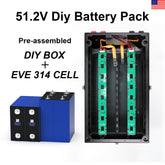

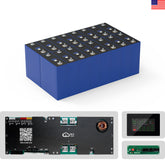

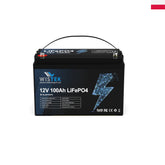
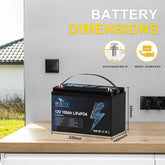
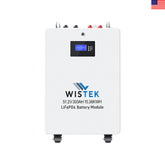
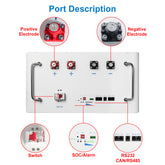
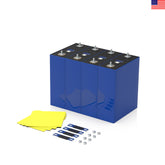
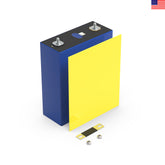
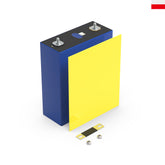

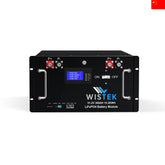
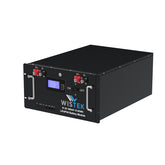
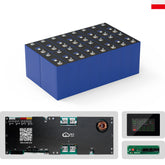








Leave a comment
All blog comments are checked prior to publishing